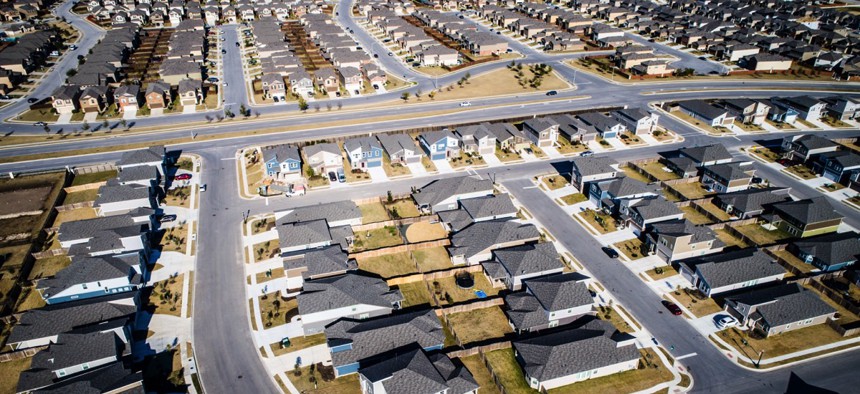State Integration of GIS Into Elections Is Slow Going

The scattered nature of voter information is the biggest hurdle, but geospatial data can mean the difference between a voter receiving the proper ballot.
Most states aren’t even halfway along integrating geospatial data into elections, despite expecting voter registration systems to support such information within five years, according to a new survey of election directors.
Geographic information systems, or GIS, can be used to pinpoint voters’ locations within geometrical voting district boundaries. The idea is the mapping technology can ensure voters are put into the right precincts and election officials get them the right absentee or mail-in ballots, helping maintain voter trust.
The National States Geographic Information Council, in its first-ever Election Director Report, asked officials to assess their progress toward GIS integration on a scale of 1 to 10—10 being full integration. The average response was a 4.
One reason for this is the dispersed nature of voter information, which is aggregated by state offices but maintained locally, Neil MacGaffey, director of MassGIS and an NSGIC board member, told Route Fifty.
“Any upgrade or change in that process of maintaining voter information will require broad outreach at the level of local government,” MacGaffey said.
As a result, GIS is typically integrated into elections by individual localities rather than statewide, and there’s a good deal of variation in how that’s done. Some election offices have long-standing GIS integration, while others “hardly know how to spell the acronym,” MacGaffey said.
When it came to state or local GIS specialists, five out of six election directors reported having access to such resources. GIS resources were fewer in rural areas.
Less than one in three election directors expressed confidence their voter registration system could even support GIS data.
One issue that arises when GIS data is integrated is the person doesn’t understand how specific the location for a voter’s address may need to be in order to ensure they receive the correct ballot, MacGaffey said.
Most of the time precision isn’t necessary, but sometimes the street an address is on is in a different political jurisdiction from the structure associated with the address. The process for identifying those instances is “laborious,” MacGaffey said, but can be largely automated with GIS tools and good quality mapping.
NSGIC assists state and local election authorities in integrating GIS through its Geo-Enabled Elections project, in part by encouraging a dialogue between chief geospatial information officers and election directors. With its second report, NSGIC launched a microsite for the project to serve as a resource for interested election directors.
“Election directors should absolutely be talking to their state GIOs,” MacGaffey said.
MacGaffey’s agency in Massachusetts has the state’s geography mapped out, and its addresses, while not exclusively those in the voter registration information system, offer a starting point for elections efforts, he added.
The NSGIC is planning five statewide pilots in unidentified states to examine which GIS best practices election directors decide on as they integrate the technology into elections.
Phase one of the project—encouraging states to replace non-spatial “address file” systems with election precinct and voter data in a GIS format—began Oct. 1, 2017 and ends Sept. 30.
“Few state election offices in the United States are fully GIS integrated,” said Molly Schar, executive director of NSGIC, in a statement. “However, election directors, on the whole, are motivated to deploy the technology to increase accuracy and gain efficiencies in their election data management processes.”
Dave Nyczepir is a News Editor at Route Fifty and is based in Washington, D.C.
NEXT STORY: To Control Drug Prices, States May Have to Face Off Against Feds






